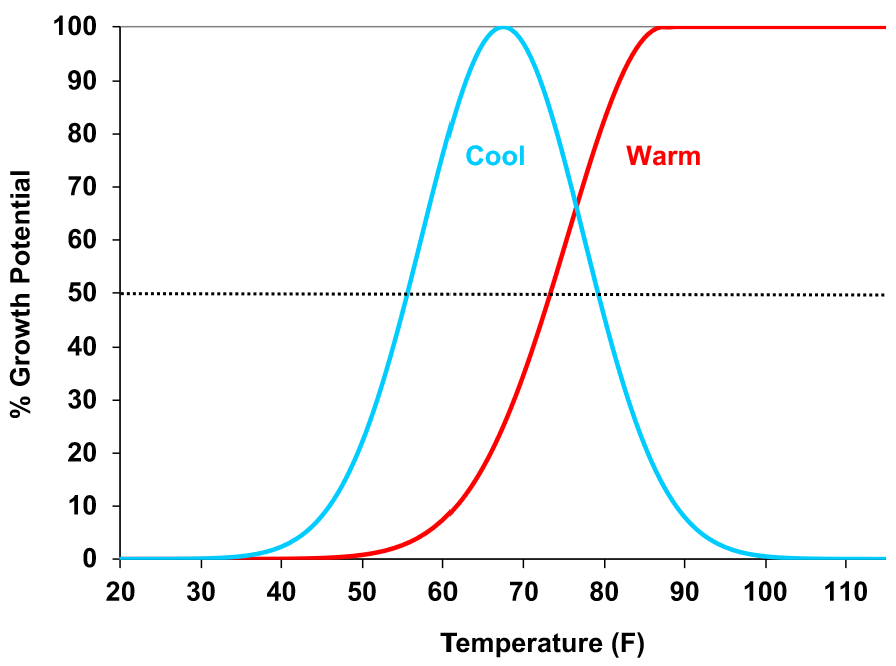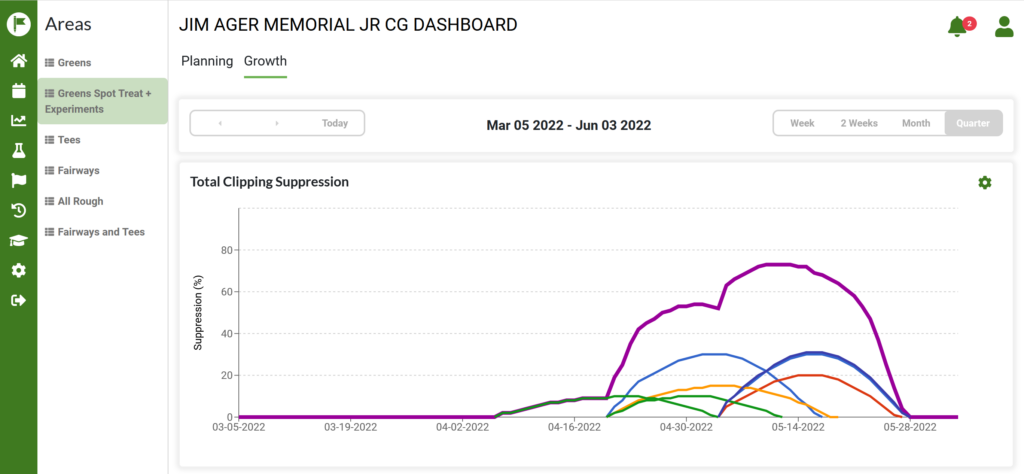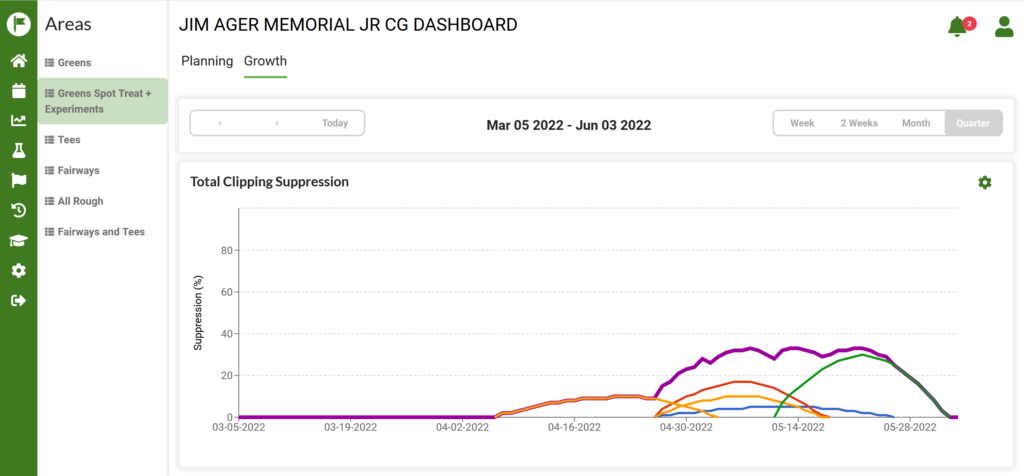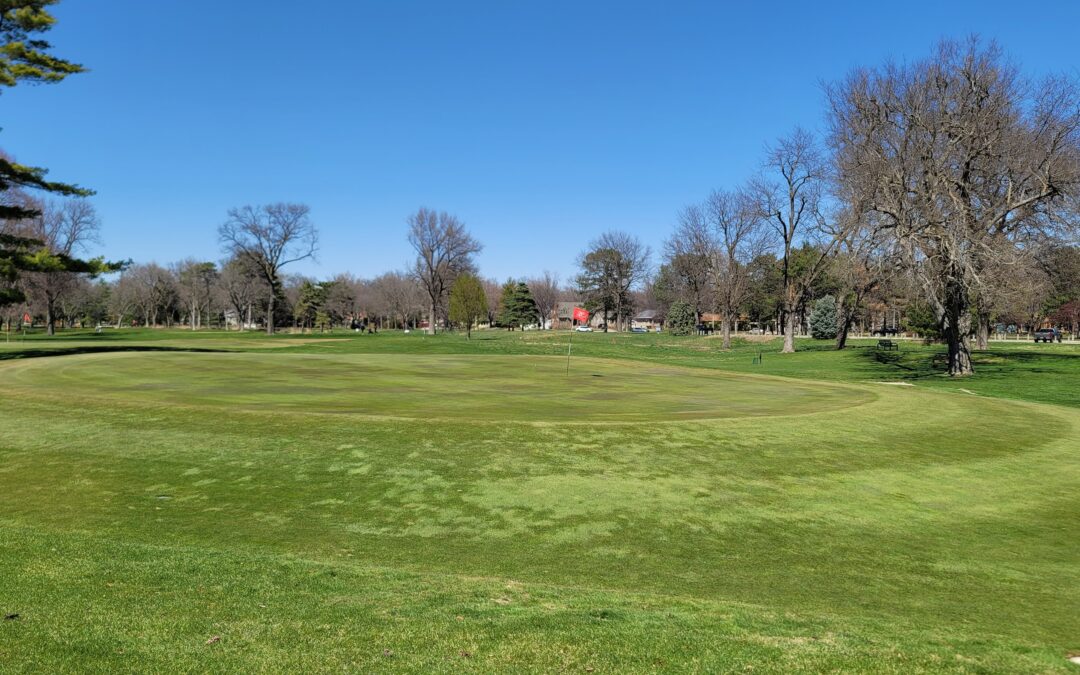Spring can be a frustrating season for many in the golf industry. Golfers, Club Professionals, GMs, and owners want to escape the winter doldrums and return to their predestine golf courses with firm and fast conditions. Unfortunately, the weather doesn’t always cooperate. The spring of 2022 has been a tough one for many turf managers with numerous reports of winterkill. Below average temperatures this April have stifled recovery from basic cultivation practices and winter damage across much of the US. This puts the golf course superintendent in a tough position. How do they balance growth rate to promote green up, accelerate recovery and promote firm and fast conditions? How should they use PGRs and DMI fungicides during these cool conditions to control seed heads and root diseases like take-all patch without causing more issues?
The cold spring weather is stunting turfgrass growth in several ways. Plant metabolism has slowed during cold weather. Think of grass plants like cold-blooded reptiles that are lethargic on cold days. The PACE Turf growth potential models also suggest growth rate peaks when air temperatures average 68°F (20°C) for cool-season species and 87 °F (20°C) for warm-season species (PACE Turf, 2014). Grassed are most efficient at sugar production at these respective temperatures. Practices that promote rapid growth outside these temperature ranges can rapidly deplete sugar reserves in the plant.

Nitrogen use efficiency is also reduced during cool weather. Our research showed that cool-season grasses have the greatest growth rate response when average air temperatures range from 63 to 78°F (17 to 25°C) depending on the species. Annual bluegrass and perennial ryegrass prefer it cooler than creeping bentgrass (see our past blog on the topic). This means a turf manager would need to apply a lot of nitrogen to see an increase in growth rate & green color during cool spring conditions. This can have direct consequences on summer turf health and performance. In addition to depleted sugar reserves, excessive spring N can cause a large mineralization flush in the summer. This leads to puffy, bumpy and slow conditions and increased thatch accumulation.


Clearly forcing too much early growth is inefficient and problematic. Spoon-feed nitrogen to simulate green-up and recovery. Monitor clipping volume production and only mow greens when needed. Light-weight rolling can be a great way to substitute mowing during these slow growth conditions.
Pest Control Conundrum
Important pests including fairy ring, take-all, summer patch, Pythium root dysfunction, and annual bluegrass seed head production need to be addressed preventatively in spring to prevent problems during the growing season. Unfortunately, products to control these pest can also have significant impacts on turf growth rate and green-up. Ethephon (Proxy) is a staple plant growth regulator (PGR) used to control seed head formation. Class B PGRs (flurprimidol and paclobutrazol) are commonly applied to limit annual bluegrass invasion during spring weather. DMI fungicides are an important fungicide class to control many root diseases, but they also have growth regulating properties. When applied in combination, these different products can result in substantial growth suppression. Combined excessive suppression with cold and the results can be dramatic.

Most golf course superintendents use a 14- to 21-day spray schedule to control growth and manage pests. While these intervals may be appropriate during the heart of the growing season, they can sometimes be too frequent during spring and fall. For example, I created a normal spray schedule in GreenKeeper App’s Program Builder for a mixed creeping bentgrass/annual bluegrass putting green in Lincoln, NE. It consisted of 14-day intervals of Proxy, then Proxy+Anuew+Mirage (tebuconazole), then Anuew (8oz/A)+Trimmit (8 oz/A)+Bayleton FLO (triadimefon).

Program Builder used our proprietary models to estimate growth suppression based on the observed and forecast weather data during April and May. Clearly there is evidence of PGR/DMI stacking which results in nearly 80% clipping yield suppression by early May. This amount of suppression would severely hamper bentgrass green-up, slow recovery from cultivation and traffic, and actually give annual bluegrass a competitive advantage over the largely dormant bentgrass.
I then used Program Build to amend my program. I stretched the second Proxy application by a week, and substituted the Mirage with Densicor (prothioconazole). I then stretched the next application to mid-May, applied Trimmit by itself and selected Heritage with the help of GreenKeeper’s Application Advisor to control root disease. The Trimmit PGR application was reduced from 8 to 6 fl oz/A, but could be adjusted if growth rate begins to surge in mid-May. These small changes reduced the cumulative growth suppression from nearl 80% to below 40%. It also lengthed the application window. This helps the bentgrass green-up, still controls annual bluegrass, prevents disease, and saves money.

Conclusions
It’s important to manage growth rate. Excessive growth and cultivation during cool spring conditions can lead to short and long-term problems. Pest control during this time of year is also very important for many cool-season turf managers, but calendar-based spray programs can also cause problems. Use Program Builder and Application Advisor in GreenKeeper to help select products and schedule applications timings. Take control of turfgrass growth rate during changing weather conditions with the help of GreenKeeper App. Start your seven day trial today at GreenKeeperApp.com.
GreenKeeper App. Save Time. Save Money. Be Confident.

